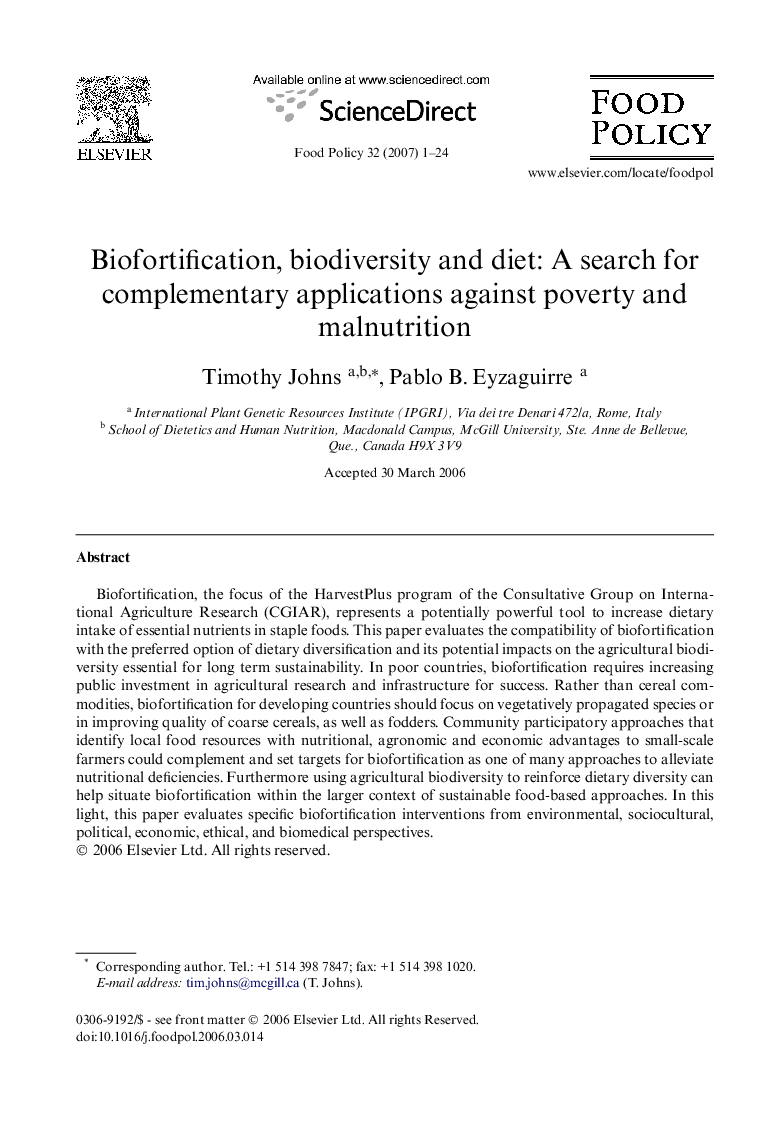| Article ID | Journal | Published Year | Pages | File Type |
|---|---|---|---|---|
| 5071030 | Food Policy | 2007 | 24 Pages |
Abstract
Biofortification, the focus of the HarvestPlus program of the Consultative Group on International Agriculture Research (CGIAR), represents a potentially powerful tool to increase dietary intake of essential nutrients in staple foods. This paper evaluates the compatibility of biofortification with the preferred option of dietary diversification and its potential impacts on the agricultural biodiversity essential for long term sustainability. In poor countries, biofortification requires increasing public investment in agricultural research and infrastructure for success. Rather than cereal commodities, biofortification for developing countries should focus on vegetatively propagated species or in improving quality of coarse cereals, as well as fodders. Community participatory approaches that identify local food resources with nutritional, agronomic and economic advantages to small-scale farmers could complement and set targets for biofortification as one of many approaches to alleviate nutritional deficiencies. Furthermore using agricultural biodiversity to reinforce dietary diversity can help situate biofortification within the larger context of sustainable food-based approaches. In this light, this paper evaluates specific biofortification interventions from environmental, sociocultural, political, economic, ethical, and biomedical perspectives.
Keywords
Related Topics
Life Sciences
Agricultural and Biological Sciences
Food Science
Authors
Timothy Johns, Pablo B. Eyzaguirre,
